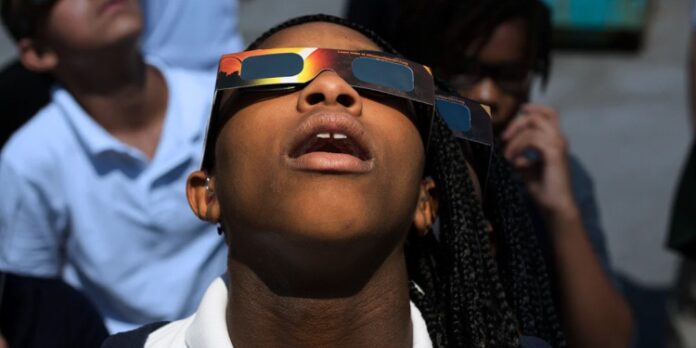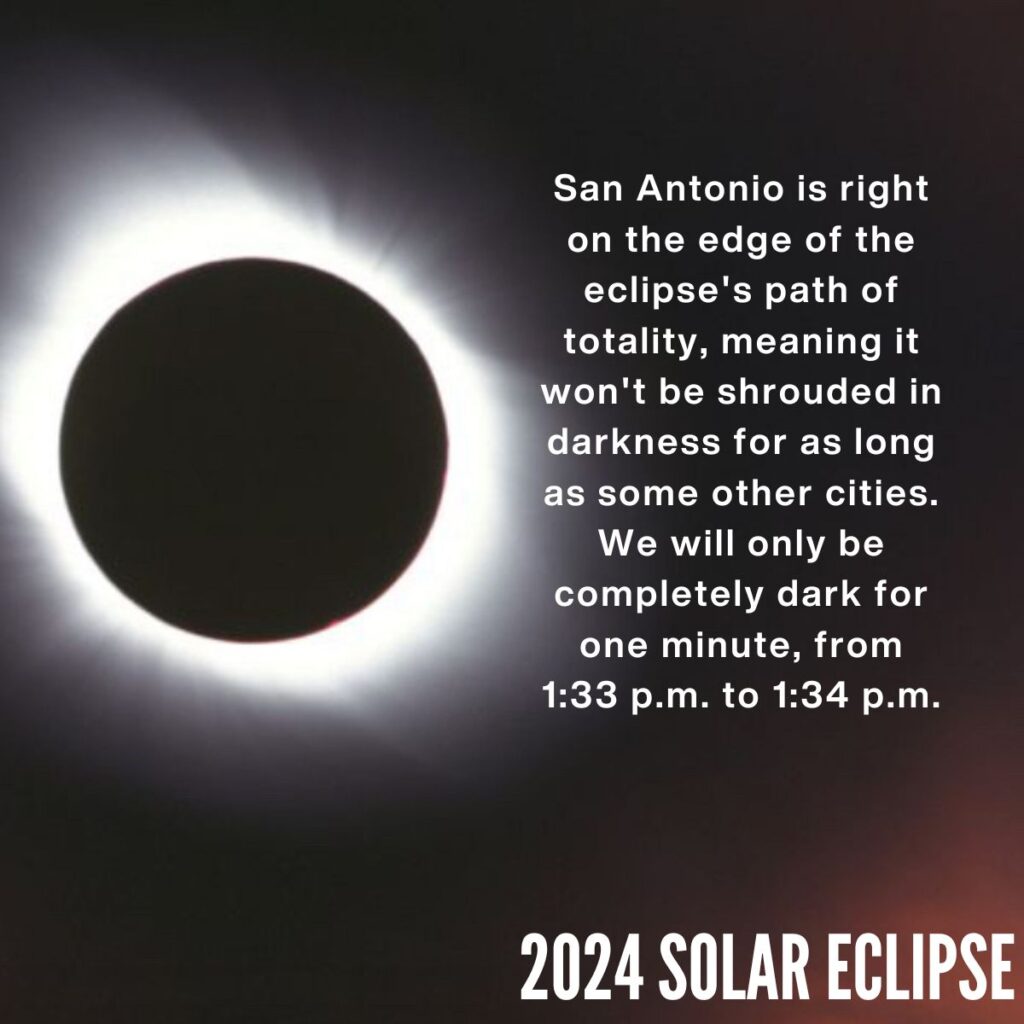“Texans Prepare as thousands Flock to Lone Star State for the 2024 Solar Eclipse Experience”
Texans will have a pretty good view of the total solar eclipse on April 8th, 2024. The last being in 2017, the moon will cast a shadow over the Earth, darkening the sky along its path starting from Mexico, entering the United States through Texas, then proceeding northeast before concluding for most people off the coast of Canada. Thousands will travel to Texas to witness this event, with local school districts opting to close in order to allow students to participate. But seeing the sight for yourself requires some planning. You’ll want to know where the path of totality is, how to get protective glasses, school closures and more.
What is a solar eclipse?
Eclipses occur when the moon positions itself between the sun and earth. The most important phase, known as totality, is when the moon fully obscures the sun’s surface. During totality, the sky will darken and the temperature will drop, resembling nighttime. The duration of totality differs depending on the location, with some areas experiencing it for over four minutes, while others, such as San Antonio, may only witness totality for one to two minutes. In fact, 12 million people in Texas reside within the path of totality, by far the largest of any state in the US.
However, there is one thing to know that is more important than anything else: It is never safe to look directly at the sun during an eclipse (except for the few moments when the moon has fully obscured its surface). At all other times you must watch the event through protective eye equipment.
To ensure that people can safely enjoy the eclipse, national provider of eye health services MyEyeDr. is partnering with Prevent Blindness to provide thousands of expert-approved solar eclipse viewing glasses at over 400 locations in 20 states. Starting yesterday you can stop by your local San Antonio store to pick up a free pair until April 8, while supplies last.
To find your closest location and additional solar eclipse safety tips, visit www.myeyedr.com/events.
What does this mean for San Antonio?
Much of San Antonio will be in the direct viewing path for the total solar eclipse. The 99.9% eclipse over downtown is expected to appear as a partial eclipse around 12:14 p.m. and end around 2:55 p.m. when the partial eclipse begins to disappear. San Antonio is right on the edge of the eclipse’s path of totality, meaning it won’t be shrouded in darkness for as long as some other cities. We will only be completely dark for one minute, from 1:33 p.m. to 1:34 p.m.
Although there wasn’t quite the same craze for the last eclipse event in 2017, many people will travel to San Antonio and the Texas Hill Country to catch the eclipse. We suggest you try to stay home to experience the event, as hotels in San Antonio have been completely booked up by the influx of tourists. Even some school districts are closing to alleviate the traffic headaches for parents.
While most of the major school districts in San Antonio will be business as usual, check out the comprehensive list of all the districts in and around San Antonio and what their plans are for the April 8 total eclipse:
NISD – Regular schedule
SAISD – Regular schedule
NEISD – Regular schedule
South San ISD – Student holiday/faculty instruction and planning day
Southside ISD – Regular schedule
Comal ISD – Holiday for students/staff
Medina Valley ISD – Holiday for students/staff
Boerne ISD – Holiday for students/staff
Comfort ISD – School holiday
Alamo Heights ISD – Regular schedule
Schertz-Cibilo-Universal City ISD – Regular schedule
Randolph Field ISD – Regular schedule
Fort Sam Houston ISD – Regular schedule
Edgewood ISD – Regular schedule
East Central ISD – Regular schedule
Judson ISD – Regular schedule
Seguin ISD – Classes canceled
Southwest ISD – Regular Schedule
Somerset ISD – Regular Schedule
IDEA Public Schools – Regular Schedule
Temple ISD – Classes canceled
Killeen ISD – Classes canceled
Kerrville ISD – Holiday for students/staff









